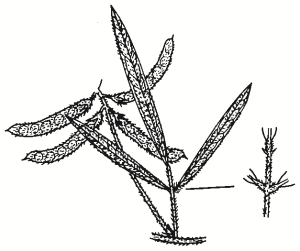Family:
Fabaceae
Glycine canescens
Silky Glycine
Other Names:
First Nations Name(s):

Regional Subspecies:
Occurrence:
Regional:
Noted west of the Olympic Highway in the areas: Narrandera- Morundah-Galore-Collingullie and Urangeline. Probably also in similar country elsewhere in region.
Habitat & Site Selection:
Various habitats, including skeletal soils in woodland. Generally observed only where grazing excluded. Tolerates moderate frost.
Habit:
Small twiner with greyish hairs. Pinkish-purple or mauve flowers fading to blue all year, particularly Jul-Nov. Grows mostly over warmer months with rainfall.
Seed Collection:
Early Oct to late Feb. Monitor closely as seeds released very soon after maturity.
Propagation:
From scarified seed or cuttings. Pour boiling or very hot water over seeds and soak until water cools. Dry to prevent rotting and sow. Germination takes 3-4 weeks. Suitable for direct seeding in pots (2-3 seeds per pot).
VALUES:
Land Protection:
Legume — improves soil fertility through ‘fixing’ nitrogen.
Ornamental:
One of showiest Glycines. Plant to climb over garden logs and fences.
Other:
Heavily grazed by stock as nutritious and palatable.
